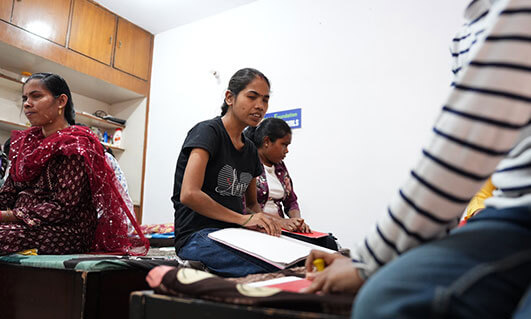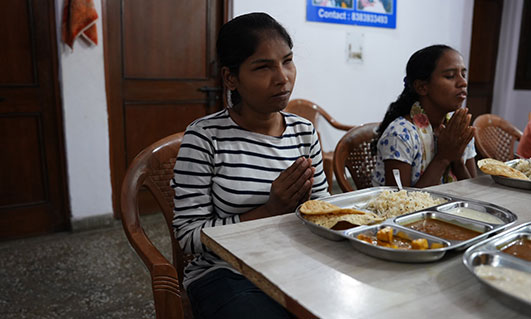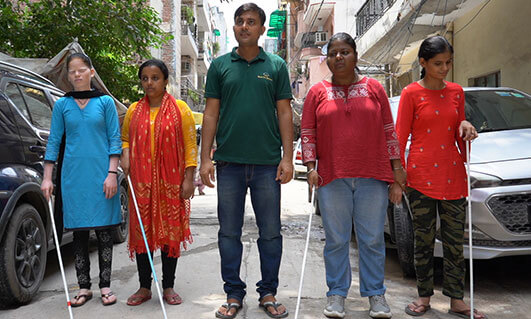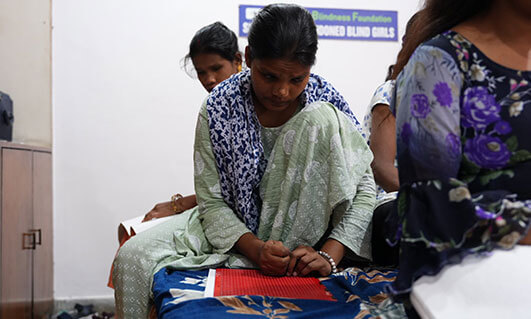
Maintaining a healthy diet is essential for everyone, but it can pose unique challenges for visually impaired individuals. However, with the right strategies, eating well becomes not only manageable but enjoyable. This blog will explore practical tips and accessible tools to help visually impaired individuals make informed and nutritious choices, ensuring that healthy eating is within reach for all.
1. Prioritize Balanced Nutrition
A balanced diet is crucial for overall well-being, and it should include a mix of fruits, vegetables, whole grains, proteins, and healthy fats. Visually impaired individuals can focus on eating a variety of nutrient-dense foods to meet their body’s needs. Consider the following tips for balanced nutrition:
- Color-Coded Foods: When cooking or preparing meals, using a color system for different food groups can help ensure a variety of nutrients. For example, green foods like spinach or broccoli for vegetables, red for fruits like apples or strawberries, and yellow for grains like corn or oats.
- Portion Control: Use kitchen tools like measuring cups or portion plates to help gauge food portions accurately. This ensures you consume the right amounts without overeating.
2. Accessible Tools for Meal Preparation
For visually impaired individuals, cooking can be made easier with specialized tools and techniques. There are various adaptive kitchen tools designed to promote independence in meal preparation:
- Talking Kitchen Gadgets: Devices such as talking scales, thermometers, and timers provide audible feedback, making it easier to measure ingredients and monitor cooking times accurately.
- Braille and Tactile Labels: Labeling foods in your pantry, fridge, or spice rack with braille or tactile stickers can make finding and using the right ingredients more efficient.
- Adaptive Utensils: Tools like non-slip cutting boards, safety knives, and spill-proof measuring cups help reduce the risk of accidents in the kitchen.
3. Meal Planning Made Easy
Meal planning is a useful strategy to ensure a balanced diet, reduce stress, and make grocery shopping more efficient. For visually impaired individuals, this process can be simplified by:
- Pre-Planning Menus: Create a weekly menu and list all ingredients needed. Digital tools like accessible apps or voice-activated assistants can help manage grocery lists and meal plans.
- Batch Cooking: Cooking in bulk and freezing portions for future use can reduce the need for daily meal preparation. Label containers with large print or braille for easy identification.
- Utilizing Audio Recipes: Listening to audio cookbooks or following recipes through voice-activated devices can make meal preparation easier and more enjoyable. Platforms like YouTube or apps like Be My Eyes can assist with step-by-step guidance.
4. Shopping for Groceries with Confidence
Grocery shopping can be an overwhelming task for visually impaired individuals, but there are ways to make it a smoother experience:
- Shopping Assistance Services: Many supermarkets offer personal shopping assistance or delivery services. Alternatively, apps such as Instacart and Amazon Fresh allow visually impaired individuals to shop from home with the help of voice-activated technology.
- Product Identification Apps: Tools like Seeing AI or TapTapSee can assist in identifying packaged food items through barcode scanning or photo recognition, making grocery shopping more accessible and stress-free.
5. Mindful Eating for Better Health
Practicing mindful eating can promote better digestion and overall wellness. By focusing on the taste, texture, and smell of foods, visually impaired individuals can foster a more positive relationship with eating.
- Eat Slowly and Savor Each Bite: Take time to enjoy meals by focusing on the flavors and textures, which can help prevent overeating and promote fullness.
- Stay Hydrated: Drinking enough water is vital to maintaining good health. Use water bottles with audible measurement markers or set reminders using digital tools to stay on track with hydration.
6. Overcoming Common Barriers
Visually impaired individuals may face specific challenges, such as difficulty identifying food, navigating grocery stores, or reading nutritional information. Overcoming these barriers is key to maintaining a healthy diet:
- Adapting Recipes: Simplify recipes by breaking down steps into manageable tasks. Rely on fewer ingredients or pre-cut vegetables to make cooking easier without sacrificing nutrition.
- Support Systems: Consider joining support groups or online communities where you can exchange ideas, share recipes, and discuss challenges with others who face similar experiences.
Conclusion
Healthy eating is not only possible for visually impaired individuals but can also be an empowering experience. With the right tools, strategies, and resources, preparing nutritious meals becomes an accessible and rewarding part of daily life. By prioritizing balance, utilizing adaptive kitchen tools, and leveraging technology for meal planning and grocery shopping, visually impaired individuals can enjoy the benefits of a well-rounded, healthy diet that promotes overall wellness.





